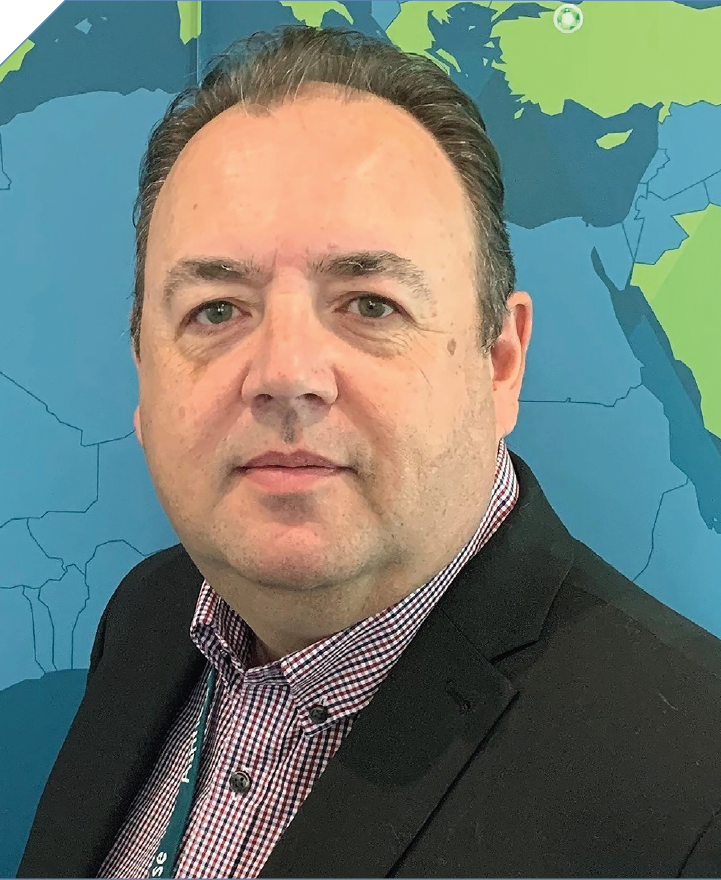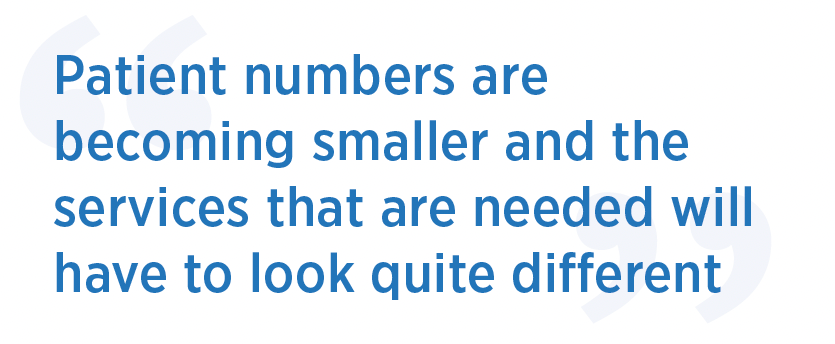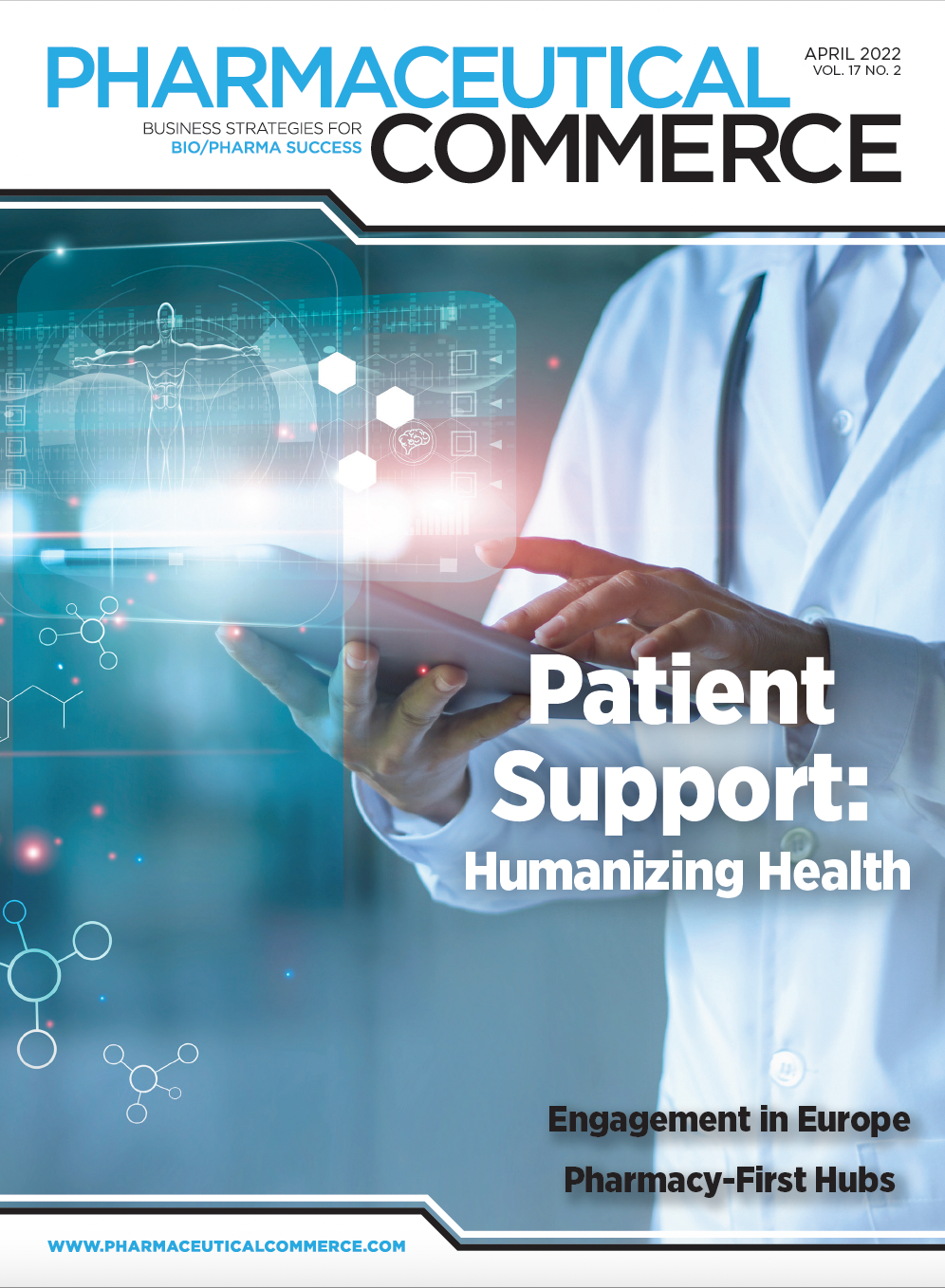Patient Support in Europe
A conversation with Ian Riches, head of patient solutions for Europe, Ashfield Engage
Ashfield Engage’s Ian Riches is responsible for developing, broadening, and strengthening the company’s patient services in Europe. He sat down recently with Pharmaceutical Commerce to discuss how Ashfield operates across the European region, while providing solutions tailored to the varying needs of the countries within it.
When we talk about patient support and hub services in Pharma Commerce, there is very much a focus on the US. From your perspective at Ashfield Engage, what is the difference between what you do in the US and what you offer in Europe?
In Europe, we can provide direct hands-on support with patients. A significant number of our services are face-to-face services, with nurses or phlebotomists giving injections, giving infusions, taking blood samples, etc., all at a patient’s home or in hospital centers. We do all the remote telephone and digital engagement and patient education that you see in the US, but we have this large element of hands-on care. The pillars of our service in the US, for example, would be technology, behavioral science, and collaboration. In Europe, we talk about technology, behavioral science, and hands-on care.
In providing solutions for Europe, I’m assuming there are challenges stemming the different healthcare systems and expectations of individual countries. Also, how are you actually defining Europe, which comprises 44 countries in total?
At the moment, Ashfield covers Western Europe. We don’t currently operate in Poland or the Eastern European countries. We operate in the central belt, the Nordics, Iberia, the EU 5 (UK, France, Spain, Italy and Germany). That in itself comes with challenges. We have markets with huge populations, where a pharma company’s budget for delivering patient services is quite large. And then we have countries with much smaller populations, albeit spread over a much bigger geography. Sweden is a prime example; in Sweden, the services may be limited by what can be afforded. For example, having nurses in the field in Sweden is fine if you are around the Stockholm area, but you may not be able to offer that kind of service up in the north of the country. The patient numbers there are so small that it is hard to justify sending a nurse up for a couple of days to support a single patient. In those circumstances, we look to see how we can support patients remotely.

What is your relationship with pharma companies in Europe?
Very strong. They are still our primary customer in a number of markets, although in the UK, we are increasingly offering and providing services directly to the NHS. We have programs that we run across multiple countries with the same pharma company. We work with probably 30 to 40 different companies across Europe with different types of programs in different markets. In bigger markets such as the UK, we may have 15 or 20 projects, where in smaller markets like Portugal, we may currently have one or two—although we would certainly like to increase that—and everything else in between.
What partnerships are you forging in order to access the market? Are you linking up with local companies?
Absolutely. We work with partners in order to establish our footprint. The French market for patient support programs is very different to every other country, for example. A patient program supporting a named product in France takes anywhere between 18 months and two years to get approval. And the French system really doesn’t support the idea of pharma services companies talking directly to patients. The patient support programs that we would run in Italy and Germany and in the UK, for example, we couldn’t offer in France. So, we work with partners and we’ll do more of that as we go outside of Europe and into the Middle East, into the Gulf where you need to have partners that understand the local environment.
It’s also very important for us to establish partnerships with digital companies. Ashfield itself can’t always be a technology company on the very leading edge of developing new solutions and apps. We are establishing more and more partnerships with digital providers. There’s a startup company in Finland, for example, that has a device that allows you to monitor when you take your tablets. It’s called Popit; it senses when you’ve taken a tablet and measures your adherence. There’s a company in Ireland that has a smart box that recognizes you’ve had your injection when you drop your needle into the box.
One of the five pillars of our strategy for the next two to three years is to identify digital partners that we can work with, where we can add value to their services, and they can add value to ours. Together, it’s the old one-plus-one-equals-three scenario, where their expertise plus our expertise provides a solution for a patient that would be far better than doing either individually.

What do you see as the main patient support challenge in the next two or three years?
A big challenge for pharma, not Big Pharma but smaller companies and emerging biotechs, is that the treatments are becoming increasingly specialized. Patient numbers are becoming smaller and the services that are needed will have to look quite different. For example, we’re working in one of our markets with a client who may have no more than 10 or 11 patients per year. Some of the things they want to offer—the traditional model of teams of nurses and 24/7 call center support—are a lot more difficult to set up and sustain when you’re only dealing with 11 patients. Of course, those patients are often exceedingly valuable to the pharma company financially because of the cost of the medication. But the old model won’t work if you’re supporting 11 patients a year. It requires us to think very differently about the way that we provide those services in terms of cost, personnel, and content.
How has the pandemic changed the way people access healthcare in Europe—and how did affect the services you were able to provide?
We established a number of new services, including phlebotomy services, to support patients, often on oncology treatments, for whom it was just not safe to go into hospitals and have blood tests. We started a service to visit those patients in their homes, take their blood samples, and send them into the hospitals. The pandemic certainly didn’t slow us down. In fact, in most markets, we had our best year ever for patient services in 2021.
